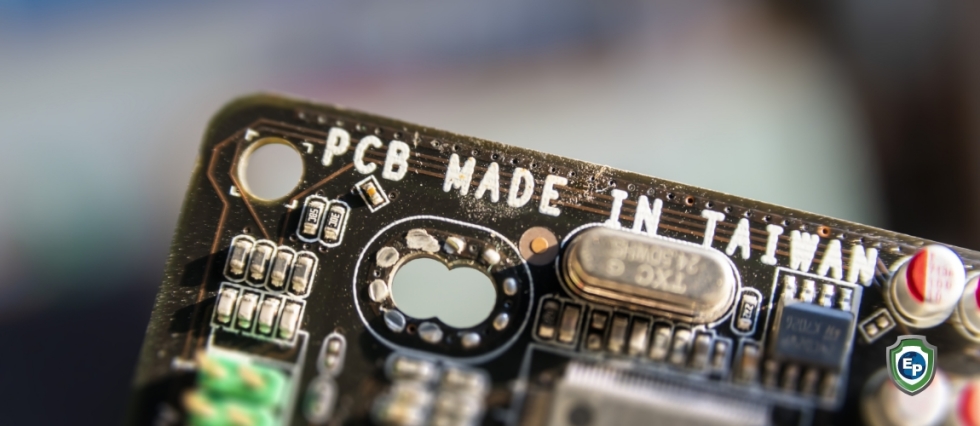Rising GDP Growth in Taiwan Boosted by Electronics Exports
Discover how Taiwan's rapid GDP growth is being driven by the country's booming electronics exports. Learn how this could impact the global economy.

Taiwan's vibrant market economy occupies an essential position in the global economy. Its transition from 'poor to prosperous' is often called the 'Taiwan Miracle.' The status of Taiwan is complex, and so is its relationship with Mainland China. Beijing considers Taipei as its inalienable part under the One-China principle and rejects Taiwan's participation as a member of U.N. agencies and other international organizations. Due to political complications, Taiwan may not have grown diplomatically, but it has received significant recognition for its economic progress.
Taiwan belongs to a group called the Four Asian Tigers, along with South Korea, Singapore, and Hong Kong. These regions experienced rapid industrialization and high economic growth rates between the 1960s and the 1990s. Later, they developed into high-income economies.
In 2020, Taiwan was the only Asian Tiger with positive gross domestic product (GDP) growth at 3.1%, ranking first in the Asia Pacific region.
Overview of Taiwan's Economy
Taiwan faced severe poverty after World War II. The land was devastated owing to the conflict between Japan and China and a civil war that caused further destruction. The first significant reform in Taiwan was introduced in the farm sector, which was essentially a tenant-based system under Japanese Rule that created an unequal distribution of land and wealth. The three significant steps—farm rent reduction in 1949, sale of public farmlands in 1951, and land to the tiller in 1953—are considered the foundation of the industrialization of Taiwan and a substantial stimulus to its subsequent economic growth.
During 1951-1965, economic assistance by the U.S., amounting to $1.4 billion, played an instrumental role in helping Taiwan achieve self-sustaining economic growth. The aid was 10% of the island's GNP in 1951 but was little more than 2% of a vastly enlarged GNP in 1965.
"GNP rose greatly in the face of a fairly constant annual aid level—implying a growth in its multiplier effects through time," according to a study that analyzes the results of a significant economic aid program in a developing country.
Manufacturing has been the backbone of Taiwan's economy, with small- and medium-sized enterprises (SMEs) playing a pivotal role. The 1950s were focused on import substitution, then moved to export promotion in the 1960s and 1970s. Taipei enacted the 19-Point Programme for Economic and Financial Reform to push economic development and the critical Statute for Encouraging Investment in 1960. The incentives for Investment, exports, and savings resulted in foreign trade becoming the engine of economic growth for many decades.
Taiwan entered the high-technology sector in the 1980s. Today, its information and communication technology industry are among the best known worldwide.
Over the years, continuous efforts have been made by the establishment to ensure that Taiwan's economic progress remains robust. In May 2016, Taiwan adopted the New Model for Economic Development. In 2020, the National Development Plan (2021-2024) was approved. The National Development Council (NDC) identified the six core strategic industries as information and digital technology, cybersecurity, medical technology and precision health, green and renewable energy, national defense and strategic initiatives, and strategic stockpile industries.
Taiwan's economy is export-oriented. Manufacturing is crucial and accounts for around 31 percent of GDP. Like most advanced economies, the services sector is the biggest and constitutes nearly 65 percent of GDP. Within services, the most important are wholesale and retail trade (17.3 percent of GDP), real estate (8 percent of GDP), and public administration and defense (6.4 percent of GDP).
Taiwan is a high-income economy, as classified by the World Bank. According to the IMF data, Taiwan's 2022 GDP is estimated at $828.66 billion, ranking 21st among all the 192 nations covered. Back in 1980, Taiwan was a $42.28 billion economy. The island is expected to cross the $1 trillion mark by 2027. Its GDP per capita, projected at $35,513 for 2022, is expected to be $45,820 in the next five years.

Electronics Industry of Taiwan
Taiwan's information technology industry has experienced phenomenal growth in the last decade and is currently ranked among the largest in the world. The development has been overwhelmingly export-oriented, with microcomputers and computer monitors leading in growth and production shares. The island also has a massive production of electronic parts and components. Taiwan's exports of these information technology products still consist of items with low average unit values. However, in the case of monitors, its exports have rapidly converged to the world average.
The share of exports concentrated in the 20 leading firms has declined steeply over the last decade, reflecting the dynamism of the small- and medium-scale firm sector. Likewise, the share of foreign-invested firms in exports has fallen significantly, indicating the relative strength of domestic firms.
The I.C. industry comprises a complex mix of business models and suppliers. Integrated device manufacturers (IDMs), such as Intel and Samsung, design, fabricate and sell their own I.C.s. But there is also a split business model — or fabless–foundry model — in which fabless design companies, such as MediaTek, design and sell I.C.s but outsource their manufacture to I.C. foundries, such as the Taiwan Semiconductor Manufacturing Company (TSMC), who only provide manufacturing services. Both approaches remain successful, but the split practice has grown more rapidly over the last 20 years. And notably, the traditional IDM, Intel, has recently launched its foundry services.
Taiwan's semiconductor industry holds a leading market share in I.C. foundry, packaging, and testing services. It is second only to the U.S. regarding design services and broader market share. Its success can be traced to strong government support during the early stages of the industry, a focus on developing technical skills and know-how, and being pioneers of the fabless–foundry model.
Taiwan and the American Radio Corporation have reached a cooperation, sending many students to the United States to learn advanced techniques. After these people returned from their studies, the Taiwanese government did not hesitate to attract a large number of talents from high-level universities, such as Tsinghua University in China. It established a government-led science and technology park. Not only that, in the following decades, Taiwan has continued to send talents to Europe, America, Japan, and other places, allowing them to return to Taiwan after their studies to contribute to Taiwan's industry. Therefore, Taiwan's talent training policy also laid the foundation for developing Taiwan's semiconductors in the future.
Stay In the Loop with Export Portal
In the world of international trade, it's vital to stay on top of current events. For information on how countries are doing during the pandemic, check out the rest of our export and import website!






Comments 0